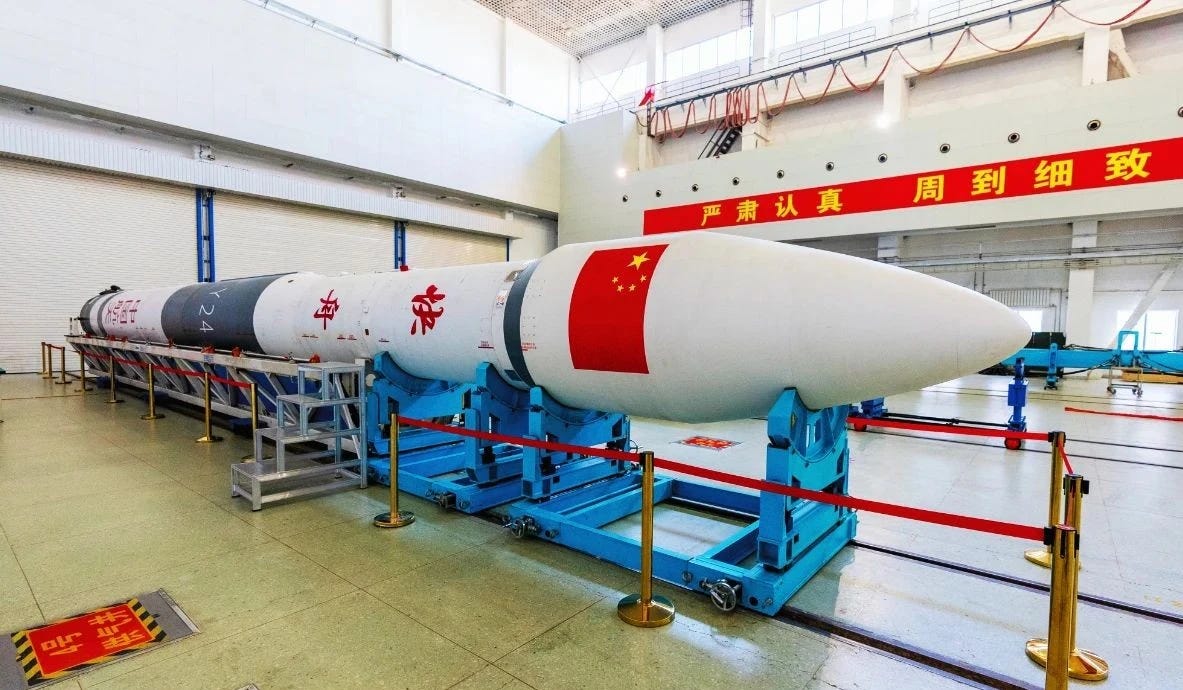ExPace May Have Suffered Loss of Vehicle During Launch [Kuaizhou-1A Flight 29]
ExPace may have suffered its first launch failure since 2021.

Earlier today between 17:51 and 18:37 pm China Standard Time (09:51 to 10:37 am Universal Coordinated Time), ExPace’s Kuaizhou-1A launch vehicle (designated Y33) was set to liftoff from Launch Area 95A at the Jiuquan Satellite Launch Center. However, rumours on the Chinese web and from locals suggest this launch did not go as planned.
It is worth noting that no official announcement of what rocket was launching came from the Jiuquan Satellite Launch Center, leading some confusion about the vehicle possibly being CAS Space’s Kinetica-1 or Galactic Energy’s Ceres-1. It is unlikely that this launch would have been a Kinetica-1 as CAS Space does like to drum up some hype, and the mishap investigation into their last failed launch concluded just over a month ago. Another NOTAM, originally set for March 2nd, better aligns with Ceres-1, ruling out that rocket.
NOTAMs and drop zones do align with the vehicle being from ExPace’s Kuaizhou series. A now deleted Weibo post also stated that a rocket over eight years old should not be having many problems, indicating the likelihood of this being Kuaizhou-1A. Ahead of the launch attempt, ExPace did not share any details so it is unknown if the launch attempt was utilizing the recently debuted Kuaizhou-1A ‘Pro’ variant or its standard version.
Now as for the rumours of what happened with today’s launch. It is said that the Kuaizhou-1A briefly lifted off for a few seconds before terminating the flight, like Japan’s first KAIROS launch. Although the vehicle may have barely lifted off, or remained on its transporter-launcher platform. Failing early into the flight may have damaged launch infrastructure considerably.
If Launch Area 95A is damaged, it is almost certainly going to effect the next launch from the site, which is a Ceres-1. That launch has already been pushed back a day per its NOTAMs, possibly related to today’s failure but that is unconfirmed.
ExPace has not experienced a failure during launch since December 2021, also with a Kuaizhou-1A. Since that failure, fourteen successful launches of the rocket took place.
For confirmation, the earliest that may come will be when a Western-owned commercial imaging satellite flies over the Jiuquan Satellite Launch Center.
Today’s attempted launch was the 29th Kuaizhou-1A mission, and the 35th launch of the Kuaizhou series. This was also the 10th launch attempt from China in 2025.
Check out the previous Kuaizhou launch
What is Kuaizhou-1A?
This section is for those less familiar with China's various commercial launch vehicles.
The Kuaizhou-1A is one of the first commercial launch vehicles from China having been developed by the China Aerospace Science and Industry Corporation (CASIC) and now manufactured by ExPace, a wholly owned subsidiary of CASIC. The first three stages of the vehicle burn an unspecified solid propellant with a liquid-fuelled fourth-stage for orbital insertion.
The payload capacity of the launch vehicle is currently as follows:
450 kilograms to low Earth orbit
360 kilograms to a 500-kilometer sun-synchronous orbit
300 kilograms to a 700-kilometer sun-synchronous orbit
On the launch pad, Kuaizhou-1A is believed to be 19.8 meters tall. Details about the vehicle are scarce but the fairing’s diameter is stated to be 1.8 meters. Four grid fins and various attitude control thrusters on the fourth-stage help control the vehicle during flight.
So far the Kuaizhou-1A has flown from all three inland launch sites, the Jiuquan Satellite Launch Center, the Taiyuan Satellite Launch Center, and the Xichang Satellite Launch Center.




